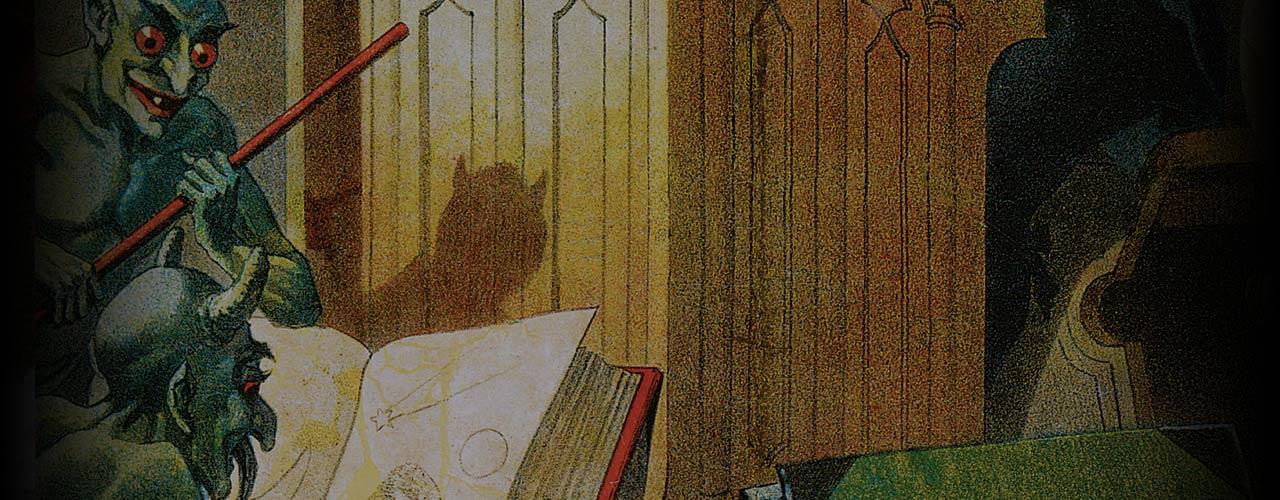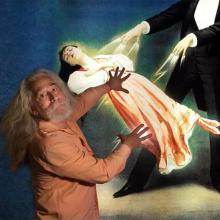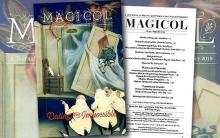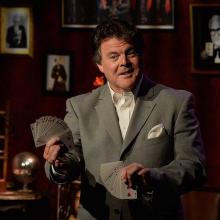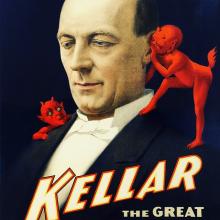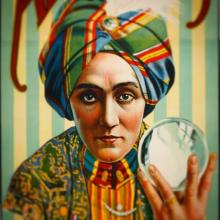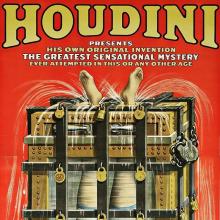Submitted by Magicana Staff on
Review of The Experts
BY MICHAEL CLOSE | MUM MAGAZINE, AUGUST 2015
Mark Twain said a classic is a book that people praise and don’t read, a definition that certainly applies to The Expert at the Card Table by S.W. Erdnase. Dai Vernon was the primary champion of the book; his approach to card handling, shaped by Erdnase’s philosophy and techniques, astonished everyone. Vernon shared his insights to the members of the New York inner circle, and years later even offered personal lessons on the techniques (a project abandoned because of too few interested parties). Charlie Miller and Ross Bertram (in Canada) were also exponents of Erdnase. As Vernon traveled from New York to Hollywood he influenced younger generations, including Harry Riser, Howie Schwarzman, Herb Zarrow, Bob White, Persi Diaconis, Steve Freeman, Ricky Jay, and others.
Self-published in 1902, The Expert at the Card Table has never gone out of print. There are numerous editions, my favorite being a shirt-pocket-size volume that allows you to conveniently carry the “gospel” with you. Commentary on the text has been offered in The Annotated Erdnase by Darwin Ortiz (1991) and Revelation by Dai Vernon (two different editions, 1984 and 2008); two lengthy video projects have been released, by Allan Ackerman and Wesley James. The influence of the book extends beyond conjuring. Inspired by Erdnase, composer Gavin Bryars and Spanish poet and sculptor Juan Muñoz created “A Man in a Room, Gambling,” ten pieces for string quartet and narrator.
Which brings us to the topic at hand, a new release from Magicana (the first of a three-volume series) titled The Experts at the Card Table by David Ben and E.S. Andrews. Reviewing this book is a challenge: if you are a serious student of card magic, and you want a deeper understanding of what Erdnase is all about, this is a book you’ll want to buy and study – you won’t need any prompting from me; if you’re not that guy, I’m not sure anything I say will convince you to plop down your dough. But I’ll give it try.
Let’s talk first about the authors. David Ben is a performer, a historian, an author, and the artistic director of Magicana, a Toronto-based arts organization dedicated to the study, exploration, and advancement of magic as a performing art. David was Ross Bertram’s only protégé; it was during those years that Ross imparted the idea that the techniques described by Erdnase constituted a “system.” (I’ll talk more about this in a moment.) David has been studying Erdnase for more than three decades; the knowledge he has gained is incorporated in his performances, most recently in Card Table Artifice, which combined the Bryars/Muñoz composition with David’s freeform demonstrations of advanced card techniques. He is certainly an expert on this subject.
But who is E.S. Andrews? The name S.W. Erdnase (in case you didn’t know) is a pseudonym; over the years, many magicians and magic historians (including Martin Gardner, Bill Woodfield, Jay Marshall, John Booth, Bart Whaley, Jeff Busby, David Alexander, and Todd Karr) have tried to uncover his true identity. Working by two separate means of investigation, David Ben and Richard Hatch honed in on the same man, Edwin S. Andrews, a man who worked on the railroad, was the correct age to be Erdnase, and who was based in Chicago at the time Expert was published.
David is convinced that Andrews is the man; consequently, his name appears as co-author of The Experts at the Card Table. (I’m sure that David’s choice will raise a few hackles among Erdnase historians, but since I don’t have a dog in this fight, that’s all I’m going to say about it. If you want to learn more, there is an eightyone-page topic on it on the Genii forum.)
All the words in The Experts at the Card Table come from Erdnase, specifically from the “Card Table Artifice” section. David has reordered that information, arranging it in a way that presents it in a more logical manner. Doing so allows the student to see how certain techniques (widely separated in the original text) are structurally related. This, in turn, helps establish the idea that the techniques Erdnase offers constitute a system of card handling. If you know a quote from Erdnase, it’s probably the one concerning uniformity of action. David’s organization of the material makes that uniformity crystal clear.
There are fourteen chapters: Primary Accomplishments; Locating, Securing, and Stocking Cards; Blind Shuffles; Blind Cuts; Circumnavigating the Cut – Table Work; Bottom Dealing; Hand Work; Circumnavigating the Cut – Hand Work; Stock Shuffle; Erdnase System of Stock Shuffling; Additional Advantages; Three Card Monte; and Technical Terms. (If you’re interested in relating David’s reorganization to the original text, I suggest downloading a PDF of The Expert at the Card Table from the Internet; it’s easy to find. Use the “find” function of Adobe Reader to track down passages in the text. That’s what I did.)
In addition to his thoughtful restructuring of the material, David has added something else of tremendous value – over 750 beautiful, black-and-white photographs of his hands executing all the techniques discussed. These photographs are profoundly helpful and are orders of magnitude above the original Marshall Smith drawings. (I know that these drawings have sentimental value for many of us. But let’s be honest; many of them provide little or no help when trying to learn the moves.)
The layout of the book is exemplary, as the two-page spread reproduced below shows.
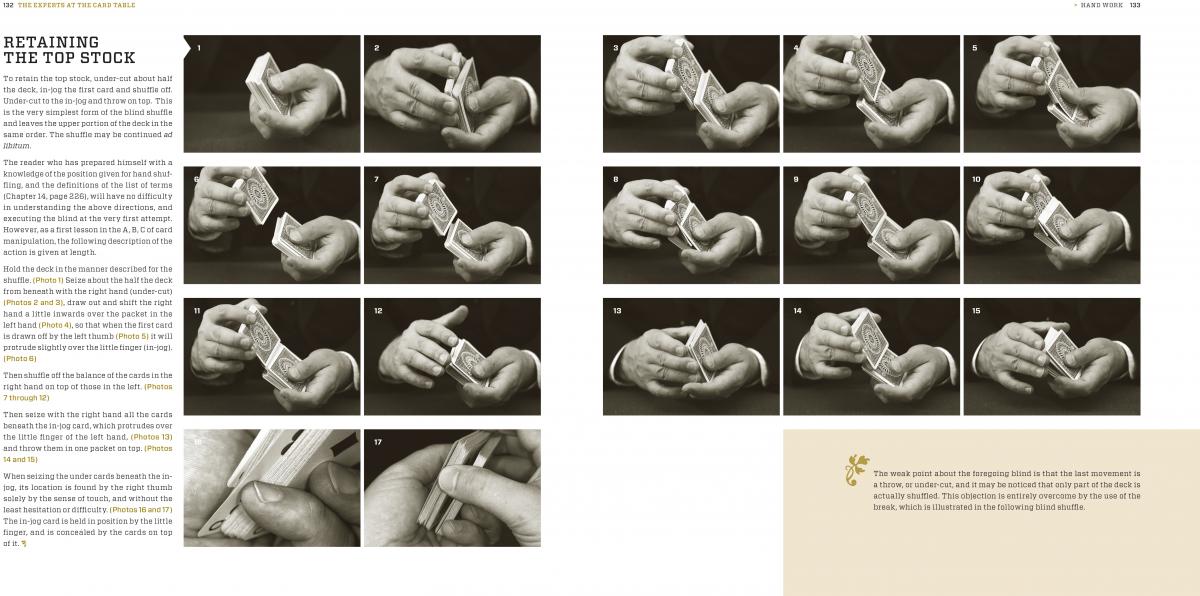
The book lies flat at any point, making it easy to work from. This is a beautiful, 235-page book; when you’re not studying it, you may want to leave it out on your coffee table.
The inner flap of the dust jacket of The Experts at the Card Table says: “While the general reader will find the technical information and the Erdnase System of Advantage Play highly educational, this book, the first of three volumes, is intended for those with a more advanced understanding of and skill set for this arcane art.” That pretty much sums it up.
If you’re a student of card magic, you’ll want this book. (At the 31N gathering I mentioned in my editor’s column, most of the attendees – magicians with great knowledge and expertise – bought a copy.) If you’re brand new to card magic, there may be other books that would be more beneficial. However, if you have some card technique under your belt and if you’ve wanted to plunge into the Erdnase pond, this is a great way to experience the material – demonstrated and organized by a man who has spent his life studying it.

